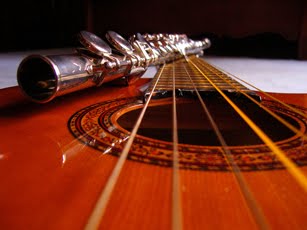
Look out the window and what do you see?
If you live in a high-rise condo, you will see tall buildings or low houses. All made by human hands. If you live in a subdivision, you will also see houses, streets and cars -- all formed by human labor. Even in the provinces, you will see old churches, bamboo houses and concrete or asphalt roads built by human hands. Except for the plants, animals, rivers, forests, mountains, planets, the Sun, the stars in the sky and yourself, almost everything else came through the power of human ingenuity.
The chair you sit on may have been once a tree planted by Nature without any human involved; but it took human hands to cut it down, to saw the lumber and to nail the wooden parts to make the chair. In a way, the chair and its wooden parts are still the tree -- transformed into something else -- and is, therefore, not entirely human-made.
But, philosophically speaking, we can also say that the lumber taken from the tree is dead and is, therefore, no longer the original tree. It has taken on a different form and has even acquired value for human use. Even as firewood, it might still have some of the qualities of the former living plant species but it is now a different matter with a different use. Its heap of ashes is the remains of the tree and, well, “was” the tree.
As creative humans then, we see ourselves as agents of change or transformation -- for better or for worse. People have the power to utilize what Nature hands us and to form things -- that is, solid ideas -- that make us multiply the value of un-harnessed things, so we think.
Of course, many today say that tropical forests are better off left alone to preserve the environment and to maintain ecological balance. That allows millions of living things to thrive and reproduce in the perpetual cycle of life. Ideally this is the case, for we know that dwindling resources bring us closer to transforming the globe into something that it was not meant to be before humans began abusing Nature.
Conservation and preservation are, in reality, two somehow overlapping goals of environmental protection which can provide the only practical approach to saving the environment. Conservation aims to “conserve” the use of things such that we allow Nature to recover and to maintain production in a sustainable way. Economic use requires producing value out of things -- tree to lumber to chair involves input of human capital and labor which is why the chair may be many time more expensive than a single tree. When people are led by greed to make more than Nature can produce, we end up with no raw materials and a degraded environment. The resultant floods tell a truly sad story, apart from the expected deaths that they bring. We lose good soil and we lose water. What is life without these?
Preservation, on the other hand, aims to preserve the overall interrelation of each aspect of our environment. This means, leaving enough space for rivers without shanties or buildings constricting its flow to the sea. It also means retaining enough open space for plants to grow, animals to thrive and humans to live in comfortably and provide water to seep into the ground and be retained much longer. This refreshes the land instead of letting the water carry so much soil through uncontrolled erosion. Ultimately, preservation is finding the ideal and overall balance of Nature needed to sustain life in any tiny patch of land and, it must follow, in the whole Globe. When we fail to do this, we not only lose raw materials, we also lose many of our basic needs in life -- enough space for planting and for water to collect in. Yes, we may have houses, condos and malls; but where would we go to catch fish, to wash our clothes and to swim for leisure if the rivers are gone? A long time ago, we used to do all these things in a river.
We may have passed the point-of-no-return in conserving and preserving what we have left in order to sustain a rapidly growing global population. Human hands (and other organs) have worked too fast and too wildly to have caused so much change while failing to give back to Nature. We have changed the entire world just by our unknowing and uncaring ways. Unknowing, because as young ones, we did not know that we live in a world that has limits. Uncaring, because we said often that everything will be fine.
Today, we cannot afford to be unknowing and uncaring.
Take this simple insight into the human cycle of life. Inside the toilet room, we shed off a small part of our physical being -- some falling hair, dead skin cells, liquid and solid excreta and, in an unending process, carbon dioxide and other gases. Yes, in the process, too, we renew or refresh ourselves by inhaling oxygen and when we eat, we rebuild our bodies. With what?
With fish, vegetables and the meat of animals which ingested what we gave out. The water we used to take a bath carry with them some of ourselves and flow into the streams and into the oceans where other creatures feed upon our dead skin and excreta. And so, the food we eat is actually us! The cycle of life seems gross but, quite literally, “we are” what we eat! Well, maybe in another form made more colorful and tastier by someone who studied culinary arts, but, in reality, the foie gras or the dimsum may contain the remains of a whole generation or two of nations from at least two or three continents. For without being facetious at all, the soil that remains to be eroded from the mountains today may well contain the remains of thousands who had died during the Flood of Noah. Forget about the millions who may lie safely in their modern “sanitized” graves. Millions more – whether shipwrecked, killed in battles or fires, or simply lost at sea or in the jungles -- died and gave back to wild Nature what it gave them beforehand.
People and animals die so that others may live. Now we know that this must be also literally true.

Human hands may reform or change the environment but the original design and intent of the Creator will never change. To dust we came from and to dust we will return. From a once-perfect land, humans were formed and given the spark of life. In the Fall that followed, the imperfect land now claims back what it once owned. Four things, Solomon said, are never satisfied: a barren womb, a barren land, fire and the grave.
Humans today remain unsatisfied, insatiable, greedy and subject to death. It is not in our power to completely conserve and preserve this world. It is a passing scene. Like a movie which begins with great youth-filled allure and magical hopes, it winds down to the climax until the story unfolds and brings us home to its resolution. Either the lovers kiss and live happily ever after or the actor dies and leaves us empty or victorious.
The story of the world is the greatest story we can tell our children and one another. Until today, we do not agree as to how it began and how it will end. Some say it will survive forever. Others say it will disappear. No, it was actually God Who said the latter. And if He did say so, we must have reason to listen more intently. Why? Because if this world is not made by human hands -- obviously --then it must be God-made. As it is written, God’s word created everything from nothing. And to nothing it will return. If He said so, it must truly come to an end, like a movie that has an ending. A beginning and an end.
Whether the story of the world will be a happy ending or not is the big question. As it is, it does not show much of a promise. But the weather alone seems to be telling us something. Is it something good or evil? Well, depending on how we treat the world and people today, we can deduce the outcome. The Maker of this world must be saying something through His own handiwork, the way our own hand-made civilizations are telling us that we have failed in so many respects.
Hope or despair. Life or death. Human-made or God-made. We have the power to create; we must surely have the power to decide what we can have out of life.
(Photos above: Thea Jael Tuazon builds castles on the sand not unlike so many people who think their handiwork will last forever.)


No comments:
Post a Comment